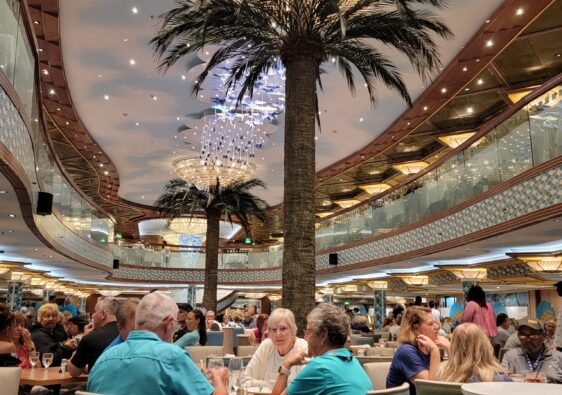
Cruising can’t be a more rewarding away to explore the world. There is simply no better way to leave the real world behind. Guests enjoy refreshing alcoholic drinks by the pool, treat themselves to specialty dining, indulge in duty-free shopping, and go on exciting shore excursions. Without a doubt, guests are just glowing. Did someone say “glowing”? The things that are really glowing are the guests stateroom key cards. By the end of day one, their stateroom key cards are significantly warm having made a mountain of purchases. This is typical cruise behavior. The question asked by millions of guests is “What is the most preferred method of payment?” From least popular to best, here are the three forms of payment used for on-board charge accounts.

3) Cash: All cruise lines allow guests to set up cash accounts on board. There are pros and cons to cash accounts. The first pro is that it’s beneficial for guests who aren’t prone to spending a whole lot of money. There’s nothing wrong with being frugal. The second pro is that guests can replenish their cash accounts at any time during the cruise. Guests, however, need to be aware of the cons. The only con with cash accounts is a big one. Guests are often guilty of being overdrawn. This happens often at the end of the cruise. Guests must make sure that they pay all outstanding charges before disembarking. Guests who set up cash accounts should form a habit of logging into their on-board charge accounts via their stateroom TV set. There, they can view their account activity. Cash accounts are ok, but it is paramount for guests to be aware of their balance at all times.

2) Debit card: Using a debit card is a more preferred payment method versus a cash account. At the check-in counter, or during the online check-in process, guests can register a debit card for their on-board charge accounts. It works the same way as the credit card. The guests’ total balance is automatically routed to their debit card accounts upon the conclusion of the cruise. There is a con to using a debit card. When guests register a debit card on their on board charge accounts, the cruise line will place a hold of “x” amount of dollars on their accounts. Whatever amount isn’t spent will be refunded back to the guests at the end of the cruise. Cruise lines differ in how much of a hold they place on debit card accounts. For instance, Carnival places a hold of $200.00 on debit card accounts. Norwegian places a hold of $150.00 for cruises less than five days. For cruises five days or longer, Norwegian places a hold of $300.00. At the check-in counter, guests sign a form authorizing the hold.

1) Credit card: Of all three forms of payment, a credit card is the guests’ most popular method. During the online check-in process or at the check-in counter, guests regularly register a credit card to be used for their on- board charge accounts. Guests can use their stateroom key cards to charge anything to their accounts, including alcoholic drinks, duty-free souvenirs, shore excursions, and photo gallery packages. They are all charged to their on-board charge accounts. Upon disembarkation, the total balance is automatically routed to the guests’ credit card accounts. Cruise lines place no holds on credit card accounts.

What about gift cards? Gift cards, regardless of whenever or wherever used, are sophisticated. Pre-paid gift cards (ex. Visa gift cards) can be registered at the guest services desk on board ship. On board Disney ships, Disney gift cards can also be registered at the guest services desk. Carnival makes using gift cards easier. Carnival gift cards are accepted at the check-in counter.
On any cruise, guests are have the time of their lives. There is so much to do, so much to experience, and so many ways to be entertained. The possibilities are endless. The dilemma often faced is deciding which form of payment should be used for their on-board charge accounts. Their choices are a cash account, a debit card, or a credit card. There are pros and cons to using cash accounts and debit cards. Credit cards, on the contrary, pose little to no hassle. Little to no inconvenience goes a long way. They are the indeed the most preferred type of payment for on-board charge accounts. The next time the question “Paper or plastic?” is brought up, the answer is decidedly clear.

